Having been on Atlas Ocean Voyages’ World Traveller for four days, I can now say with some authority that it’s a special cruise experience. I am a veteran of conventional cruising, with at least 2000 passengers onboard and where anyone can feel anonymous. On this much smaller vessel, I feel I’ll get to know all the guests and crew by the disembarkation in Venice in less than a week.
Well, that’s an exaggeration, of course. But that’s the feeling I get on Atlas, which is even smaller than most luxury cruise lines like Azamara, Oceania and Regent Seven Seas. It’s more intimate and personal, like you’re cruising with friends and acquaintances. It’s something I could do again if I get the chance.
One great thing about this kind of small ship cruising is going to ports that larger ships cannot access. I’ll talk about one here: Itea, the gateway to a significant archaeological site, and the Corinth Canal, a manmade passage that cuts through the isthmus of the Peloponnese Peninsula. But first, you’ll learn a little about Mykonos, the ultra-popular island that went from agrarian to luxe within the last 50 years.
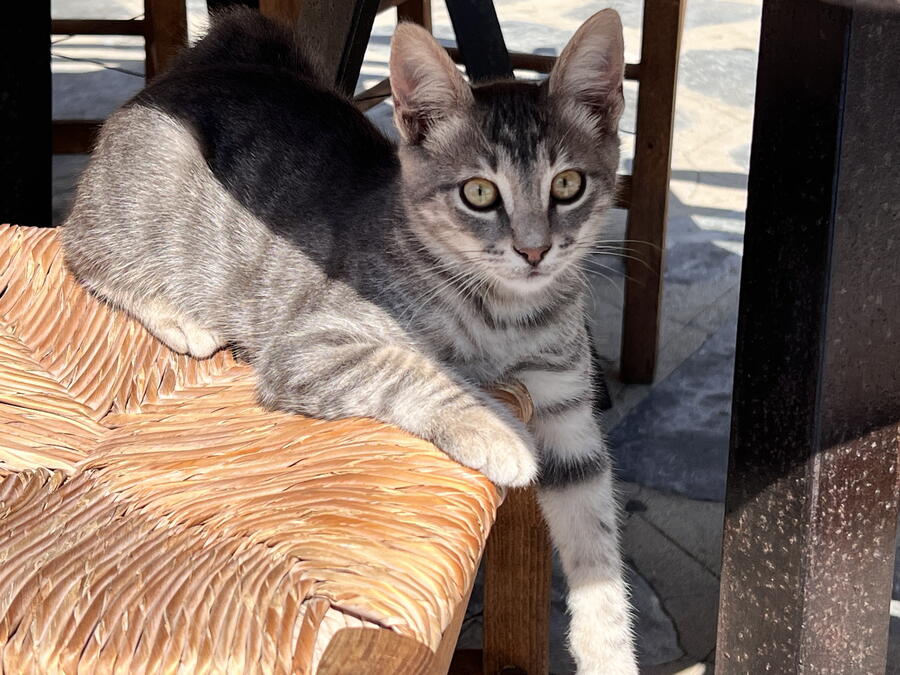
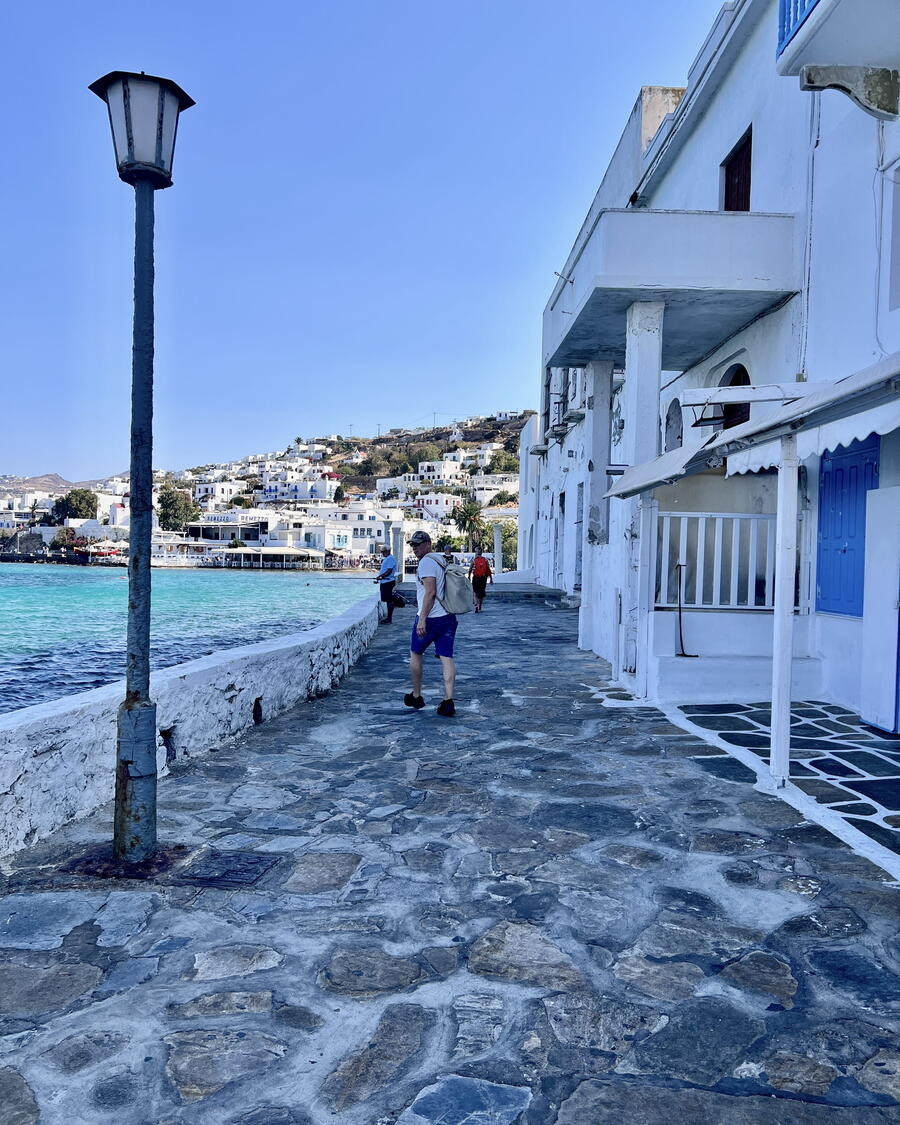

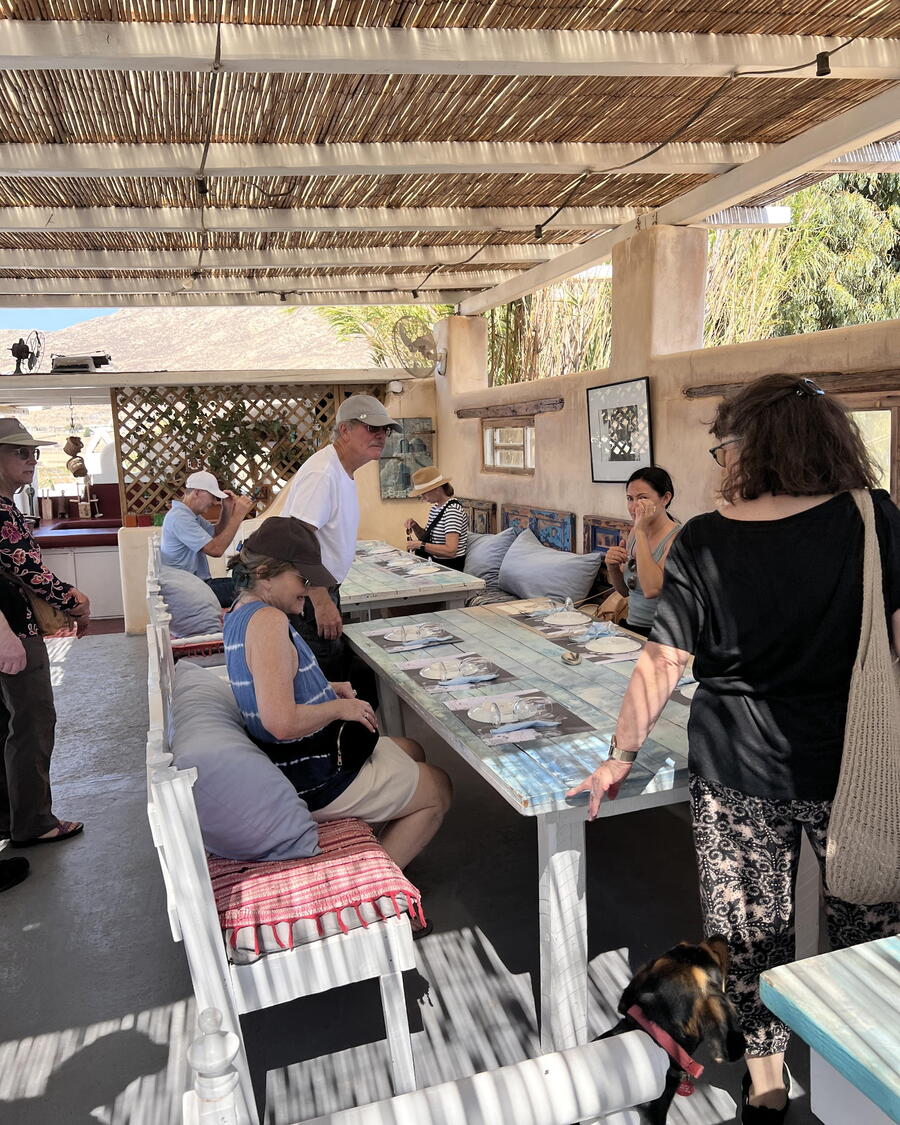
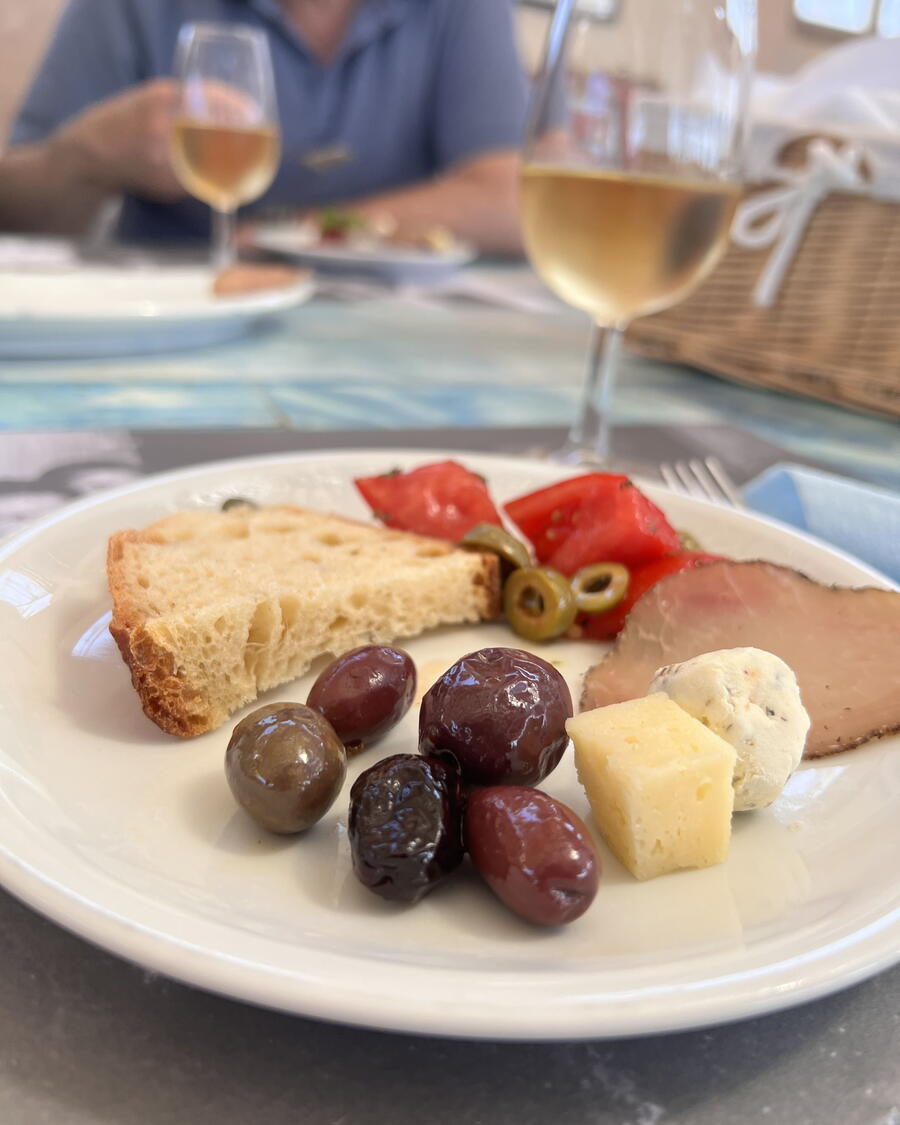
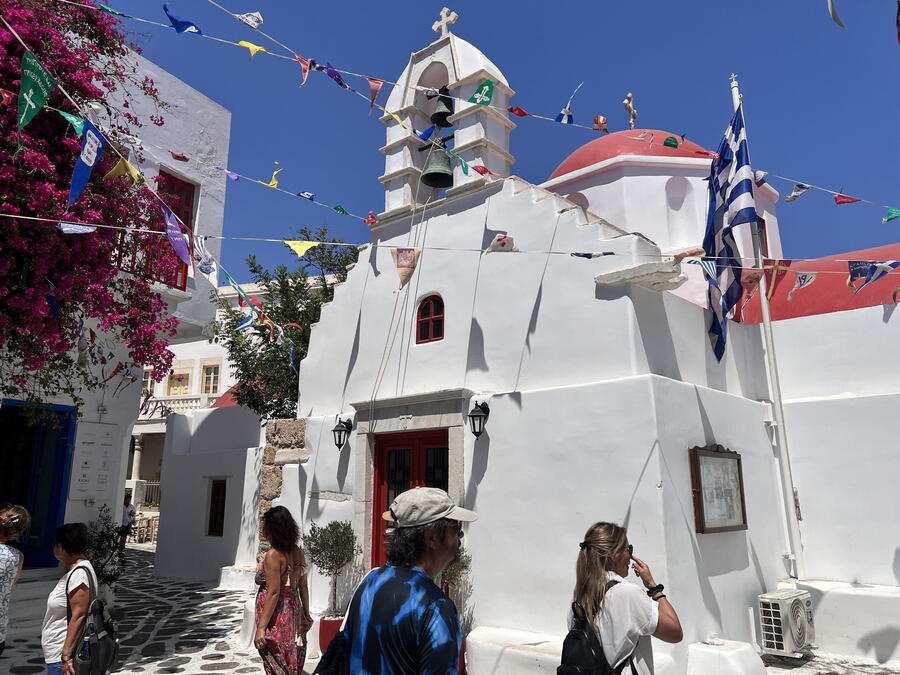
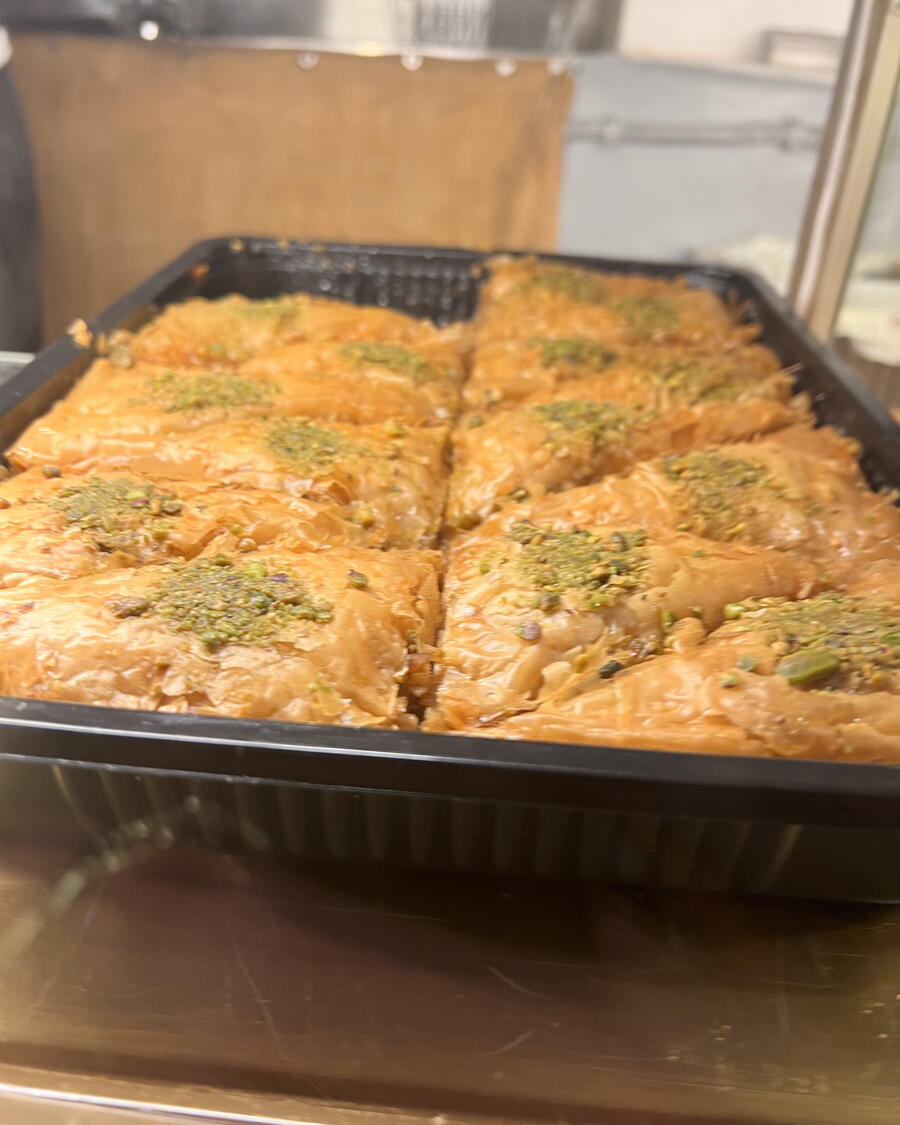
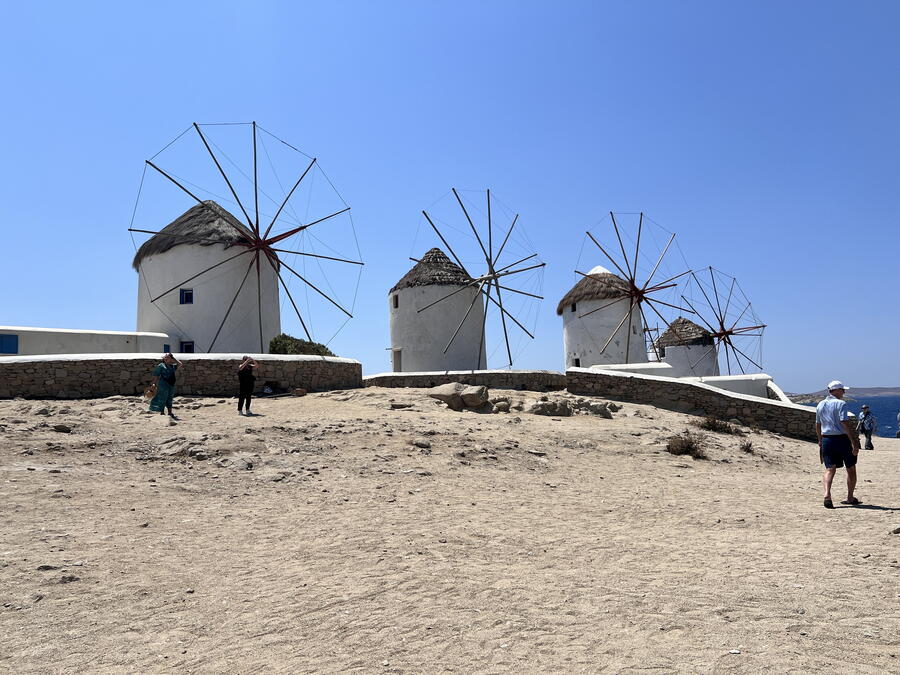
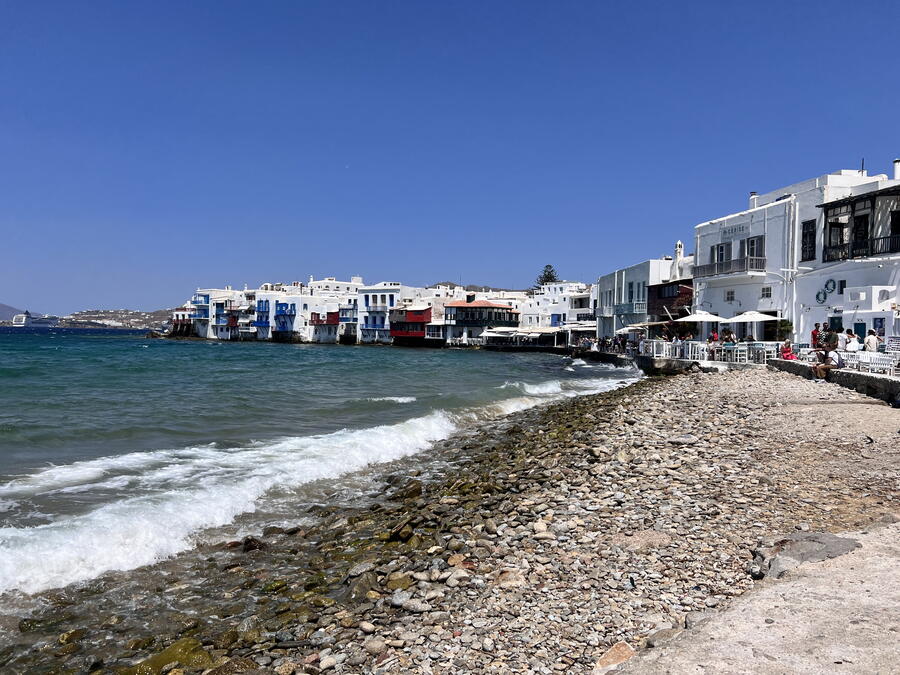
Mykonos
I’ve heard many things about this windswept destination, which has the reputation of a party central along with Santorini, an island further south. So, I wanted to visit something less about its touristy aspects and something that would give a glimpse into its past, when farmers and fishermen dominated the population.
I chose the Greek Eats and Vineyard excursion, which consisted of a quick stop at Ano Mera, home to a Greek Orthodox monastery, Vioma Organic Farm and a quick spin through the town. Amo Mera was just a place to stretch our legs, as we didn’t have enough time to see the monastery. My fellow guests and I were here for the wine, and it didn’t disappoint.
Vioma is an organic farm and vineyard removed from Mykonos town's beehive-like atmosphere. We sampled white, rose, and red wine, all made with local grapes and are only available in Greece and some parts of Europe. One thing that was unique about this winery was its growing methods. The vines are low to the ground to avoid wind damage, and the growers play music to help with the development. I personally think it makes a difference because the wines were exceptional.
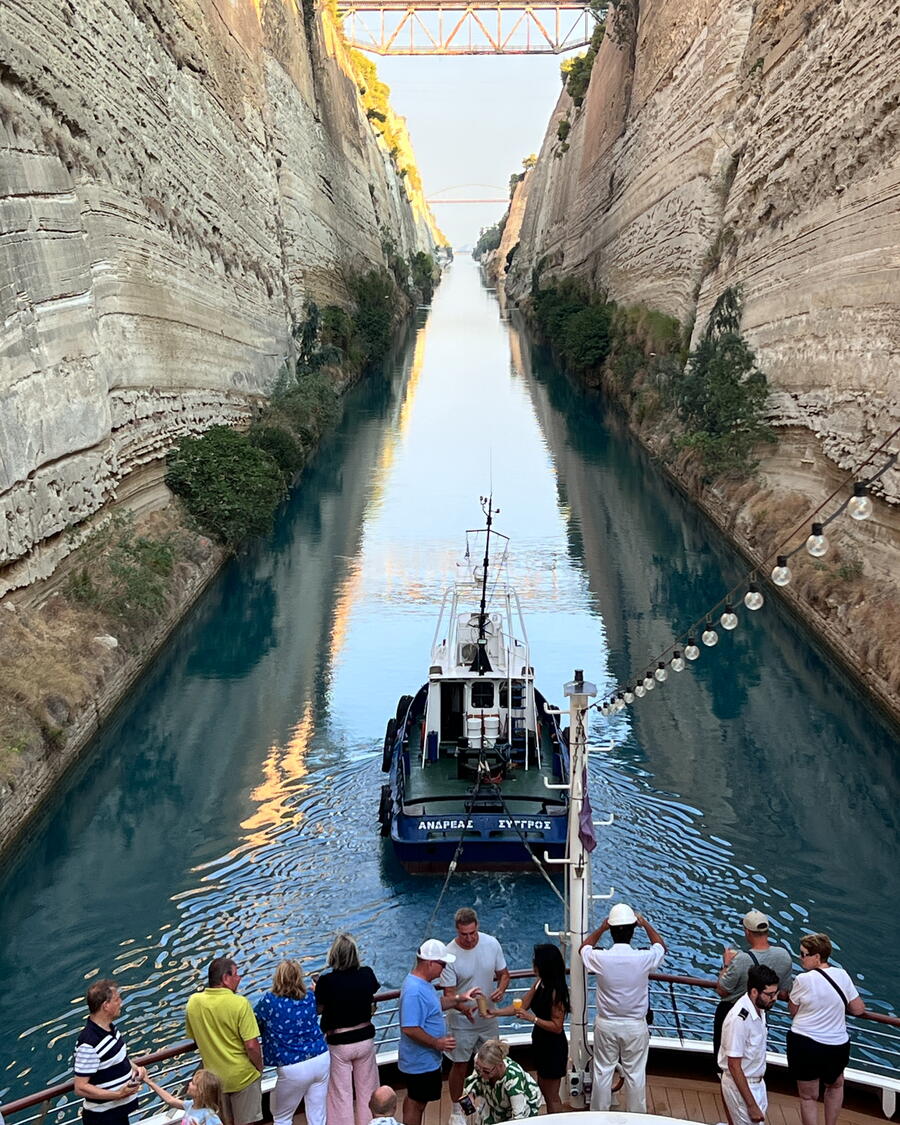
Corinth Canal
Like the Isthmus of Panama and the Suez Peninsula, the Peloponnese Peninsula proved to be a formidable obstacle for shipping. Ancient Greeks and Romans first proposed a canal in the seventh century. However, construction didn’t formally start until the late nineteenth century, which took 11 years. Even then, funding ran out, and other problems made it less usable than originally intended.
As the World Traveler did, small vessels can still transverse the four-mile-long passageway. What was surprising about it was the closeness of the cliff walls. At times, I felt like I could touch them. It was to the crew’s skill that they did not run aground or bump into the canal’s edges.
Landslides are the biggest issue with the Corinth Canal today. It has been closed twice since 2021 and just reopened in mid-2023. So, I guess we were fortunate to cross this navigational wonder.

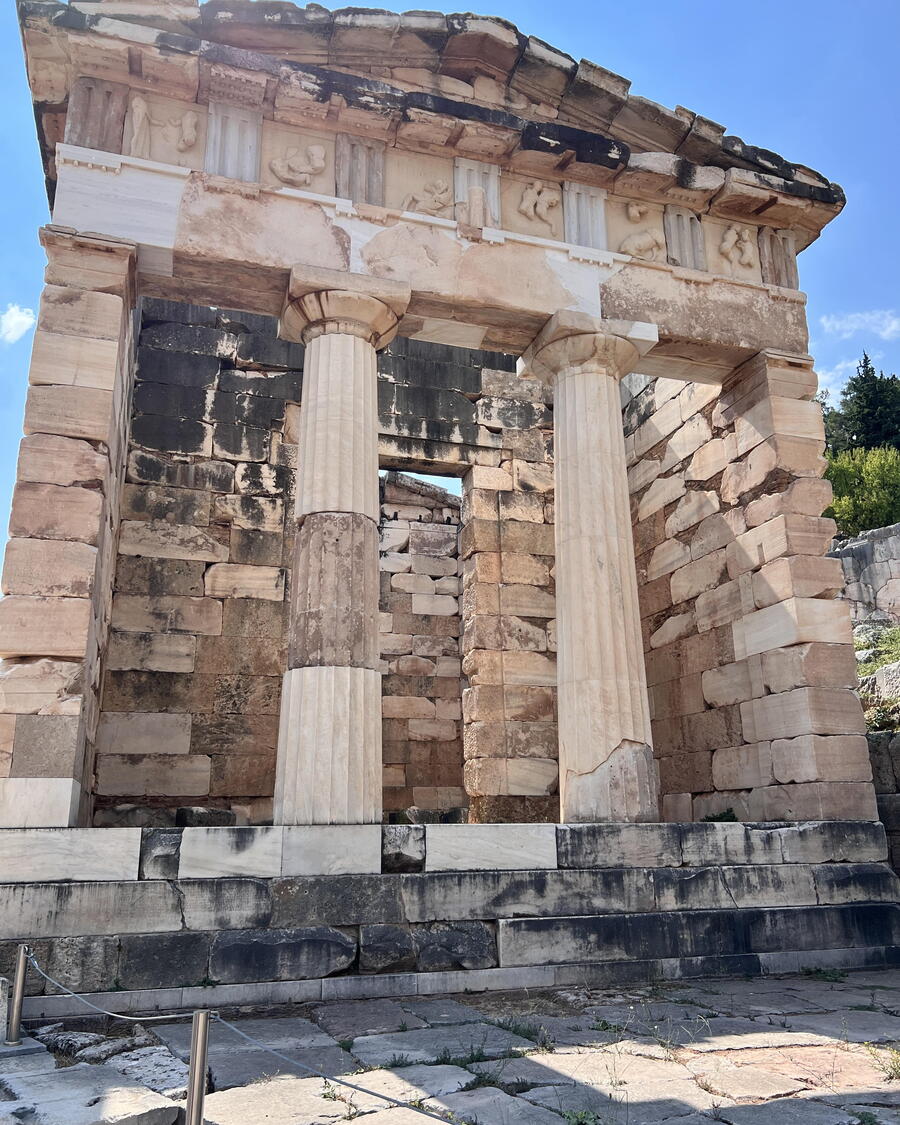
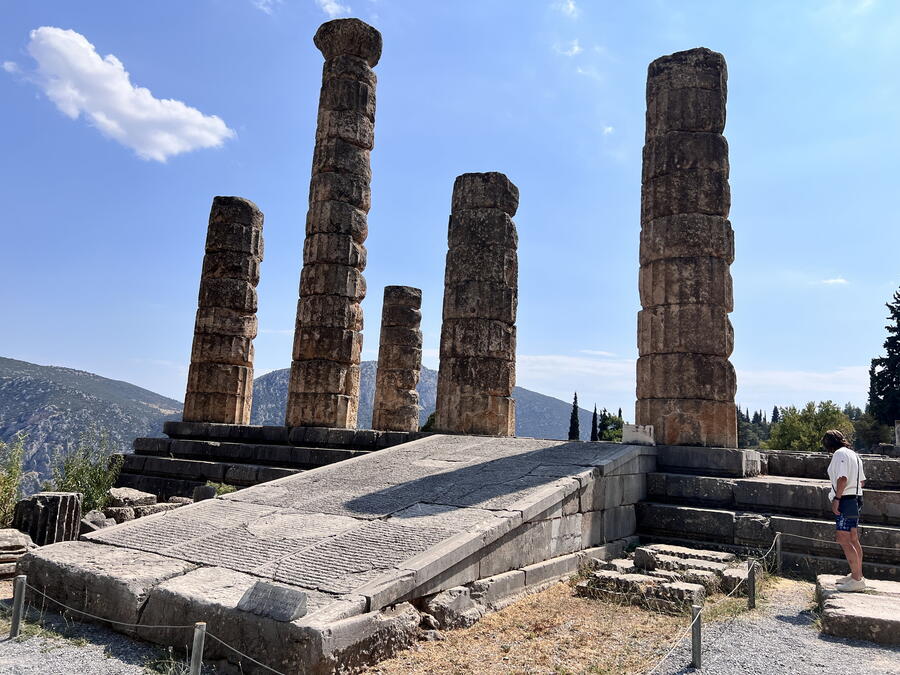
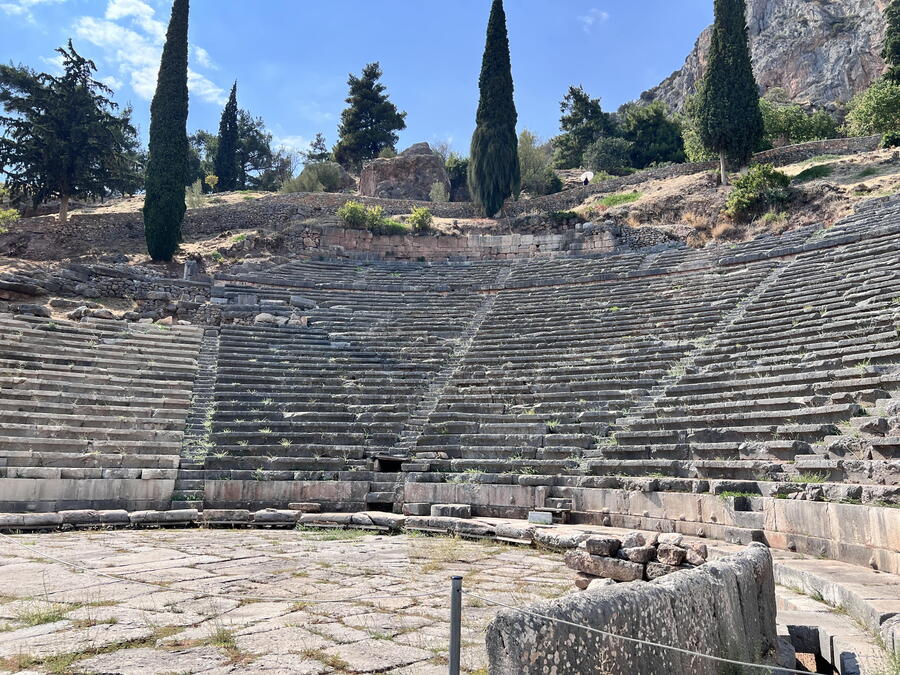
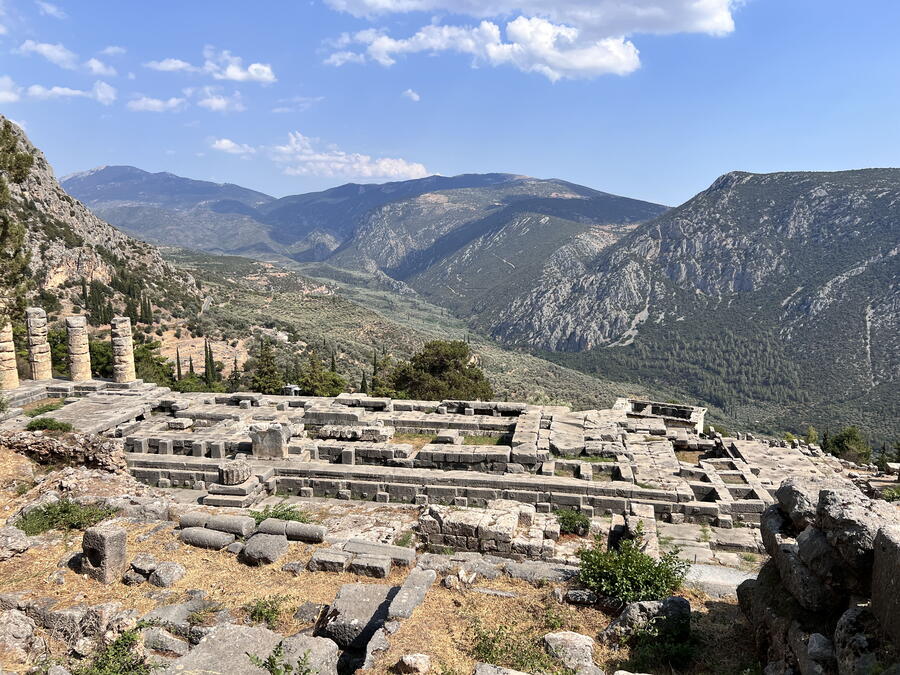
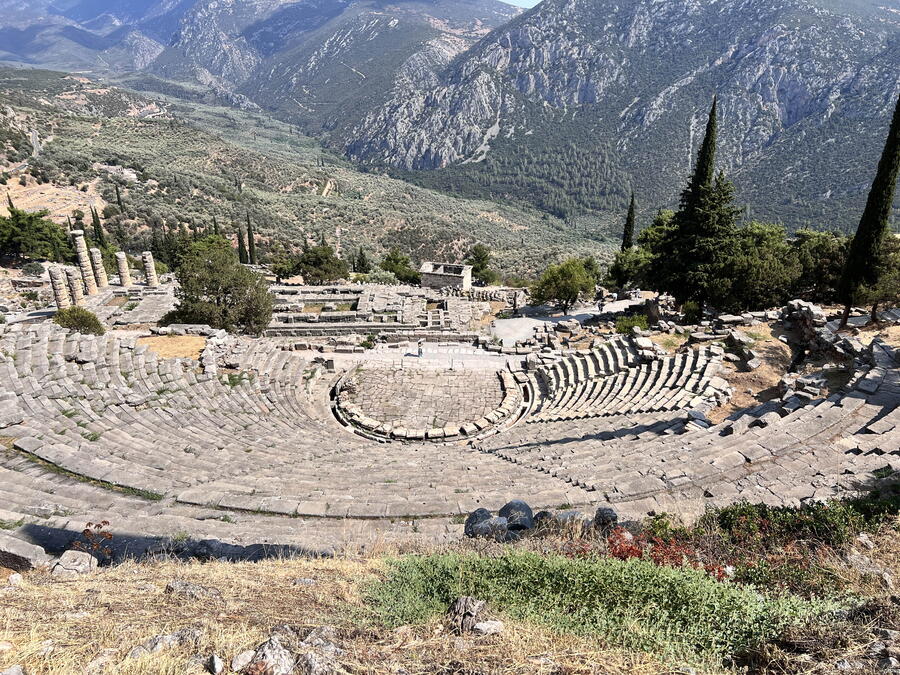
Itea and the Oracle of Delphi
The town of Itea was one of the most important ports in the ancient Mediterranean world. It was the gateway to Delphi, where the oracle Pythia lived and related prophecies for anyone prepared for them. That meant those who “knew thyself” didn’t need the foretelling to improve their lives. Greeks and others from around the region, from Egypt to modern-day Iraq, made this pilgrimage.
At the beginning of the seventh century B.C., most people took the roughly 15-mile trek up a treacherous mountain path, either by oxcart or on foot. They would also bring offerings to the oracle—anything from small trinkets to massive statues, some displayed in the archaeological site’s museum. From here, I also learned of the late nineteenth-century French excavation, which was largely responsible for this discovery.
Outside, visitors can see what remains of Delphi, whose ruins lie in tiered levels. The most impressive are the marketplace, an Athenian offering storage temple, the temple of Apollo (where the oracle was), and an amphitheater.
